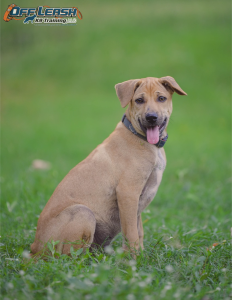Learn how to create a customized doggy first aid kit to handle common injuries and emergencies, including essential items, medication and protection, documentation, customization tips, storage and maintenance, as well as training and preparedness tips.
Introduction to Doggy First Aid Kit Importance
Preparing for the unexpected is a fundamental aspect of responsible pet ownership. The significance of having a doggy first aid kit becomes apparent when faced with the unpredictable nature of minor accidents such as cuts, scrapes, and insect bites. These incidents can occur anywhere – during a leisurely walk, an energetic play session, or even within the confines of your home. A customized doggy first aid kit equips you with the essential tools and supplies to address these common injuries promptly. This immediate response is not only crucial for the well-being of your furry companion but also serves as an interim solution until professional veterinary care can be sought. The advantage of customizing this kit lies in its ability to cater specifically to your dog’s unique needs, considering factors such as breed, size, and existing health conditions, ensuring that you are prepared for a wide range of emergencies.
Moreover, the peace of mind that accompanies the readiness to handle such unforeseen events cannot be emphasized enough. Knowing that you have a personalized doggy first aid kit at hand can alleviate the stress and panic that often accompany emergencies. This preparedness is especially valued in situations where immediate veterinary assistance may not be readily accessible. Crafting a comprehensive dog first aid kit is crucial for responsible pet ownership. Furthermore, integrating a doggy first aid kit into your routine care practices underlines the importance of health and safety in your pet’s life.
Essential Items for Your Doggy First Aid Kit
 Basic Supplies
Basic Supplies
For any dog owner, having a well-prepared first aid kit means including essential items like absorbent gauze pads for wrapping wounds, adhesive tape, and cotton balls or swabs for cleaning around injuries. Disposable gloves are a must to maintain hygiene during the treatment process. Towels can be used for cleaning or as makeshift slings, and an oral syringe can administer medications or flush wounds. Additionally, liquid dishwashing detergent is handy for cleaning wounds, while scissors are necessary for cutting bandages to the right size.
Medication and Protection
Including an oral thermometer in your dog’s first aid kit is essential to check for fever, a common sign of infection or illness. Antiseptic wipes and a digital thermometer can assist in wound care and temperature monitoring, respectively. For dogs with specific health needs, prescribed medications should be a part of the kit. Moreover, having hydrogen peroxide on hand is useful for cleaning wounds or inducing vomiting under the guidance of a veterinarian.
Documentation and Information
Maintaining a record of your dog’s medical history, including any allergies and treatments they’ve undergone, is crucial. This information, alongside a list of emergency contacts such as your vet’s details and local animal control, can be lifesaving. Including a pet first aid guide offers step-by-step instructions on handling various injuries and emergencies.
Customizing Your Dog’s First Aid Kit
Creating a tailored first aid kit for your dog goes beyond basic emergency supplies; it involves understanding and catering to the unique needs of your furry friend. For instance, a young, active dog that loves exploring the outdoors may encounter different risks than an older, more sedentary pet. Active dogs might benefit from having paw protectors to shield their feet from rough terrain or items specifically designed for tick removal to prevent Lyme disease. On the other hand, older dogs could need items that address age-related conditions such as arthritis, including gentle pain relief medications or supplements recommended by your veterinarian.
Moreover, certain breeds may be predisposed to specific health issues. For example, brachycephalic breeds like Bulldogs and Pugs are more prone to respiratory problems, so including items that can help clear airways or manage breathing difficulties could be life-saving in an emergency. Additionally, your vet’s insight can be invaluable in customizing your dog’s first aid kit. They can suggest specific medications and supplies tailored to your dog’s health history and potential breed-related concerns. This might include recommending antihistamines for dogs known to have allergies or advising on the best way to manage chronic conditions such as diabetes in an emergency situation. By integrating these considerations, your dog’s first aid kit becomes an essential tool in ensuring their safety and well-being, providing peace of mind that you’re prepared to address their needs in any situation.
Storage and Maintenance of the First Aid Kit
Proper storage and diligent maintenance are key to ensuring that your doggy first aid kit remains a reliable resource in times of need. It’s essential to store the kit in a location that’s cool and dry to prevent any damage or degradation of its contents, such as medications or adhesive products. This careful placement not only preserves the integrity of the items but also keeps them out of reach of curious pets and children, avoiding potential accidents or misuse.
Regular inspection of the kit is crucial for its upkeep. This involves checking the expiration dates on all items and promptly replacing anything that’s no longer viable. Over time, products like hydrogen peroxide can lose their effectiveness, making them unreliable in critical situations. By ensuring that each component of your dog’s first aid kit is within its use-by date and in good condition, you can have confidence in your ability to provide immediate care. Moreover, considering a travel-friendly version of your kit can be a lifesaver during vacations or outings, ensuring you’re prepared no matter where you and your furry friend venture.
Training and Preparedness Tips
Preparation goes beyond merely assembling a doggy first aid kit; it encompasses understanding how to effectively utilize each item within it. Enrolling in a pet first aid and CPR course is a proactive step that can significantly enhance your ability to respond to emergencies confidently. These courses, often offered by veterinary clinics or pet care organizations, provide hands-on training on critical skills such as wound dressing, performing CPR, and recognizing signs of distress in your dog. This education is invaluable, not just for emergency situations but also in fostering a deeper understanding of your dog’s health and wellbeing.
Moreover, regular practice with the items in your first aid kit is crucial. Familiarizing yourself with the use of a digital thermometer, for example, can make a significant difference in a real emergency where time is of the essence. Additionally, staying informed about common canine health issues and the latest first aid techniques can further empower you as a dog owner. Resources such as pet health blogs, veterinary newsletters, and even discussions with your vet during regular check-ups can provide ongoing education. This level of preparedness fosters a sense of security, knowing you’re equipped to handle unexpected situations with your furry friend.


 Basic Supplies
Basic Supplies
